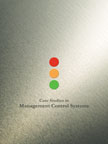Operations Management
 |
Details
Textbook:
Pages : 329;
Paperback;
210 X 275 mm approx.
Workbook:
Pages :
239; Paperback;
210 X 275 mm approx, Sample Applied Theory Questions
Courier charges extra
Pricing
Textbook Price: Rs. 900;
Workbook Price: Rs. 700;
Available only in INDIA
Detail Table of Contents
Click below to view
HTML
Productivity and Quality Management : Chapter 18
SUMMARY:
Productivity is a tool of measurement that determines the efficiency of the organization in terms of the ratio of output produced with respect to inputs used. Various factors like technology, plant layouts, equipment, and machinery affect productivity. Hence, operations managers need to carry out a regular review of all these factors to maintain as well as improve productivity.
|
|
the key issues, which defines an organization's competitive position in the market. Till the mid-seventies quality was only defined by periodic maintenance, but companies today are using quality as a competitive advantage against the competitors. To gain competitive advantage in the market through quality, organizations have adopted the Total Quality Management (TQM) approach. The TQM philosophy states that maintaining and improving quality is not just the prerogative of quality control department but each and every employee of an organization is equally responsible. A clever and well-executed advertising may attract customers initially, but if the product supplied does not match customer’s quality expectations then in all probability the customer will shift to a competitor's product
Quality is conformance to requirements. A well designed and properly produced product without any error may not be perceived as a quality product by the customers if it does not satisfy their requirements.
There are eight different quality dimensions that a company can leverage to gain competitive advantage. They are performance, features, reliability, conformance, durability, serviceability, aesthetics and perceived quality. Random samples, statistical control charts, and acceptance plans are some of the tools that are used for quality control.
Control charts (X-Charts, R-Charts, P-Charts and C-Charts) are used to find out if the quality of the product is within acceptable limits. The P-chart is used to control the percentage of defectives in the sample. X-chart and R-chart are used to control sample means and sample ranges. Average outgoing quality (AOQ) curves and operating characteristics (OC) curves explain the workings of acceptance plans.
For a service organization, the quality can be judged only through the feedback from the customers.



